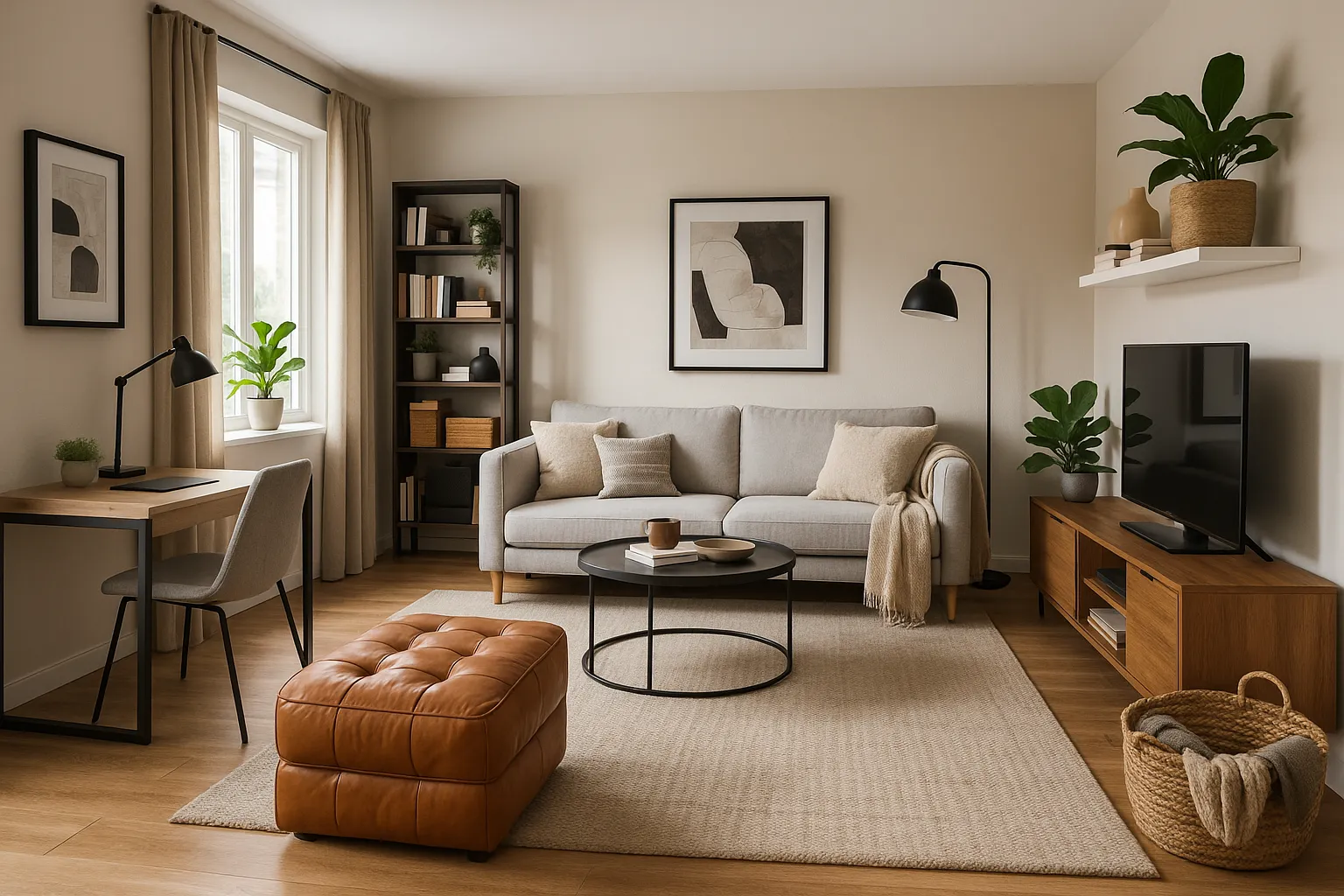In many homes today, especially apartments and open-plan spaces, the living room needs to serve more than one purpose.
It might be your place to relax, work, exercise, entertain guests, or even serve as a dining area.
The key to creating a successful multi-functional living room is smart planning, flexible furniture, and clever design solutions that allow the space to adapt without feeling cluttered or chaotic.
In this guide, you’ll learn how to turn your living room into a stylish, practical, and multi-purpose environment that works for every part of your day.
Define the Functions of the Space
Start by identifying all the activities that happen—or need to happen—in your living room. Defining these functions helps you create zones and choose furniture accordingly.
Common Functions to Consider:
- Lounging and watching TV
- Working from home
- Hosting friends and family
- Playing with kids or pets
- Reading or relaxing
- Dining or snacking
- Exercising or doing hobbies
Even if your living room is small, clear priorities will help you maximize the space effectively.
Use Furniture to Define Zones
Zoning is essential in a multi-functional space. It allows you to organize different activities without building walls or using dividers.
Zoning Ideas:
- Use a sofa to divide the lounge area from a home office space.
- Place a rug under each zone to visually separate it.
- Add a low bookcase or console table to subtly divide spaces.
- Angle chairs or furniture toward each other to create conversation areas.
Zones give structure to the room and help prevent the space from feeling cluttered or undefined.
Choose Multi-Functional Furniture
Furniture that serves more than one purpose is your best friend in a multi-use living room. It saves space, reduces clutter, and allows the room to shift as needed.
Smart Furniture Choices:
- Sofa Beds or Sleeper Sofas: Great for overnight guests.
- Storage Ottomans: Use for seating, footrests, and hidden storage.
- Extendable Coffee or Dining Tables: Adjust to fit different needs.
- Foldable or Nesting Tables: Tuck them away when not in use.
- Modular Sofas: Rearrange sections to suit different activities.
Look for pieces that are stylish, compact, and adaptable.
Create a Home Office Nook
Working from home has become common, and the living room often doubles as an office. Instead of sacrificing style or comfort, integrate your workspace thoughtfully.
Home Office Setup Tips:
- Use a compact desk or floating wall desk.
- Tuck a desk behind the sofa or in a corner.
- Choose a desk chair that complements your decor.
- Hide supplies in stylish storage bins or baskets.
Keep your workspace organized to maintain the living room’s relaxing feel after hours.
Incorporate Flexible Lighting
Different zones require different lighting. Layered lighting allows you to adjust the atmosphere based on activity and time of day.
Lighting Tips:
- Use floor lamps or sconces in reading areas.
- Add a desk lamp with adjustable brightness.
- Install dimmable overhead lights for ambiance.
- Use smart bulbs to change tone and brightness with your phone or voice.
Lighting defines zones and enhances both functionality and mood.
Maximize Vertical Space
When square footage is limited, vertical space becomes extremely valuable. Use it for storage, decor, and even functionality.
How to Use Vertical Space:
- Install shelves above desks or seating areas.
- Mount the TV to the wall to save floor space.
- Use tall bookcases to define zones and store essentials.
- Hang pegboards or organizers for workspaces or hobbies.
Vertical storage keeps things organized without taking up precious floor space.
Keep It Tidy with Smart Storage
Clutter can destroy the flow of a multi-purpose room. Smart storage helps you switch functions quickly while keeping the space looking great.
Storage Solutions:
- Built-in or wall-mounted storage units.
- Storage baskets or decorative boxes for remotes, toys, or crafts.
- Side tables or benches with hidden compartments.
- Floating cabinets or credenzas to keep the floor clear.
The easier it is to clean up and reset, the more functional your living room becomes.
Use Decor to Tie Everything Together
A unified design helps different functions blend seamlessly into one cohesive room. Choose a consistent style, color palette, or theme that runs throughout the space.
Decor Tips:
- Stick to one or two main color families for harmony.
- Use matching or complementary finishes on furniture.
- Repeat patterns, textures, or materials across zones.
- Choose versatile decor like plants, art, or mirrors that fit all functions.
Consistency makes transitions between uses feel natural and intentional.
Add Personal and Comfort Touches
Even a practical space should feel cozy and personal. Add elements that make your living room feel like home, no matter how many roles it plays.
Comfort Elements:
- Throw blankets and plush pillows for lounging.
- Area rugs to soften and define zones.
- Artwork or photos that reflect your personality.
- Scented candles or diffusers for ambiance.
Comfortable spaces are more inviting—and more likely to be used fully.
Final Thoughts: Design for Your Life
A multi-functional living room is not about squeezing everything into one space—it’s about creating a room that truly supports the way you live. With thoughtful furniture choices, smart storage, and well-defined zones, you can build a space that handles work, play, rest, and everything in between with ease and style.
Whether you’re working from home, hosting friends, or simply lounging on the sofa, your living room should adapt to your needs—and reflect who you are.
